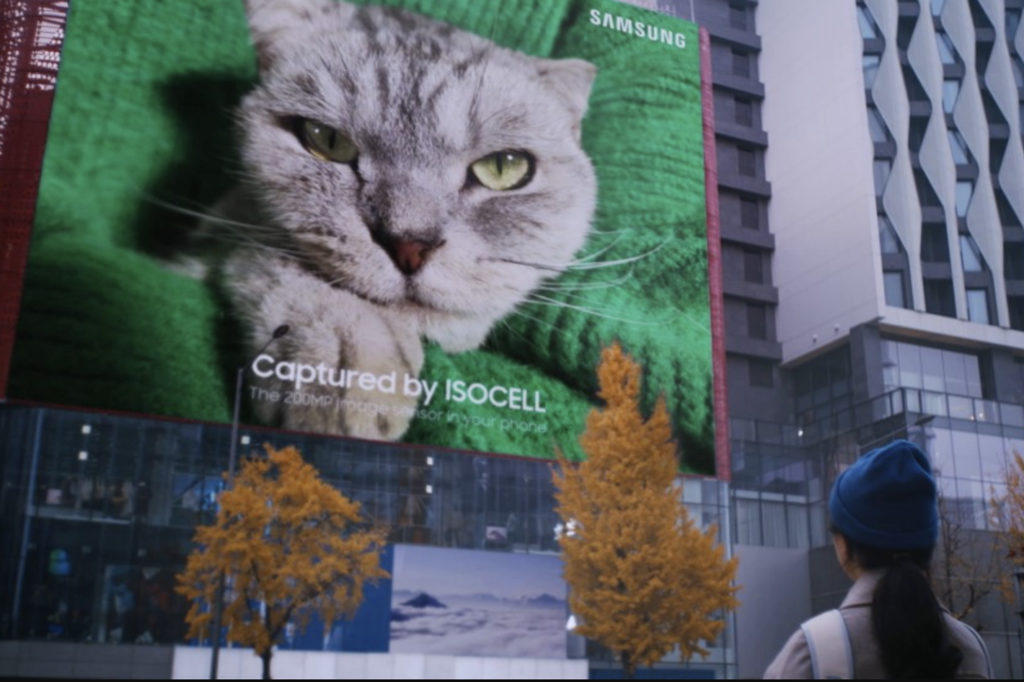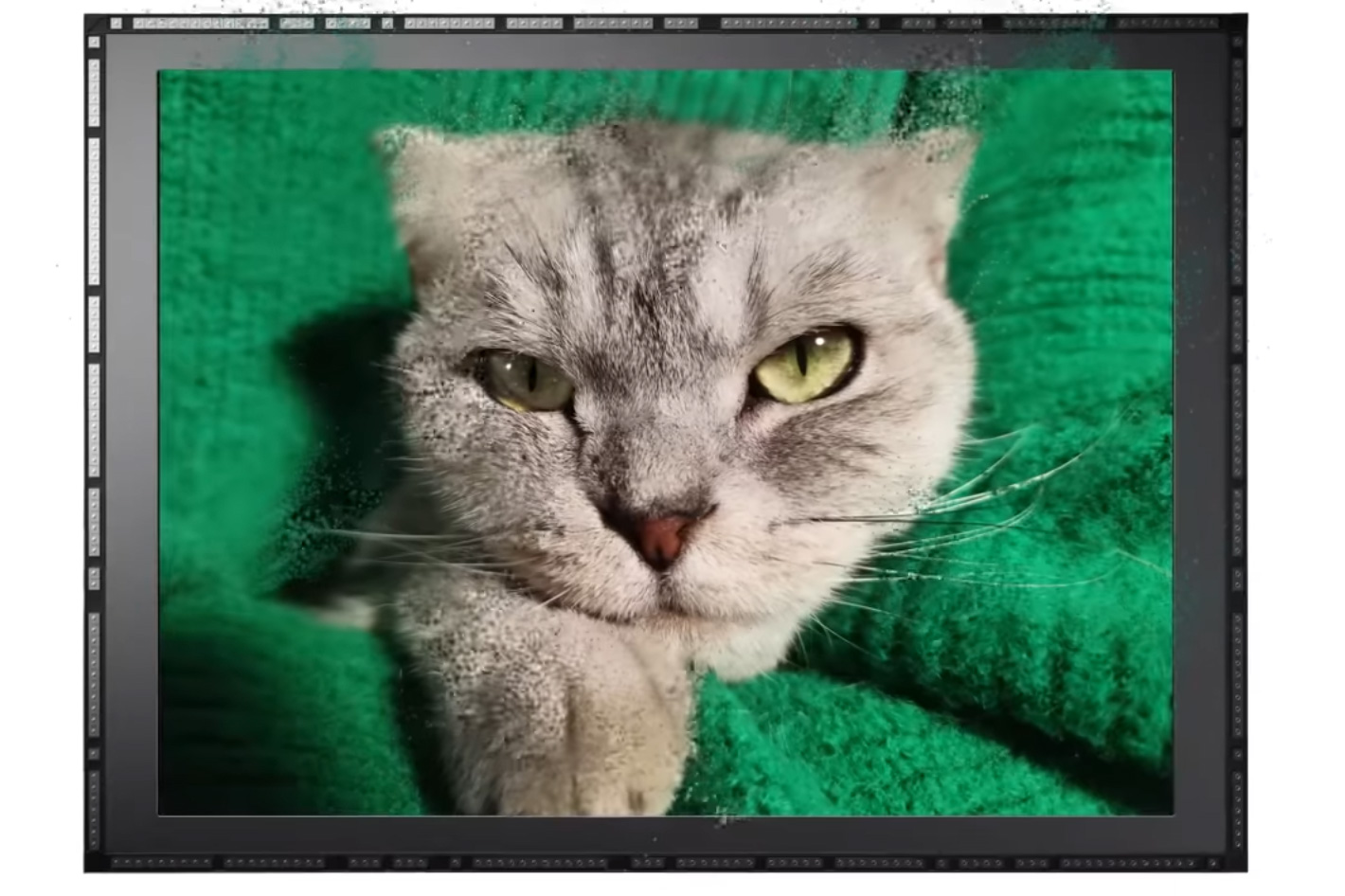 Paving the way for its newest imaging sensor, Samsung Electronics printed a picture of a cat on an enormous 616 square meter-sized canvas, about one and a half times the size of a basketball court.
Paving the way for its newest imaging sensor, Samsung Electronics printed a picture of a cat on an enormous 616 square meter-sized canvas, about one and a half times the size of a basketball court.
Introduced September 2021, the ISOCELL HP1 is the industry’s first mobile image sensor to support 200MP. Based on Samsung’s most advanced 0.64μm-sized pixels, the ISOCELL HP1 brings such ultrahigh resolution in a small package that fits comfortably in today’s handheld devices. With the ISOCELL HP1, pictures hold an astonishing amount of detail that helps the image stay sharp even when cropped or resized. The Motorola Frontier smartphone, which will be launched in July, will have this sensor, and so will the Xiaomi 12 Ultra, a smartphone developed with Leica.
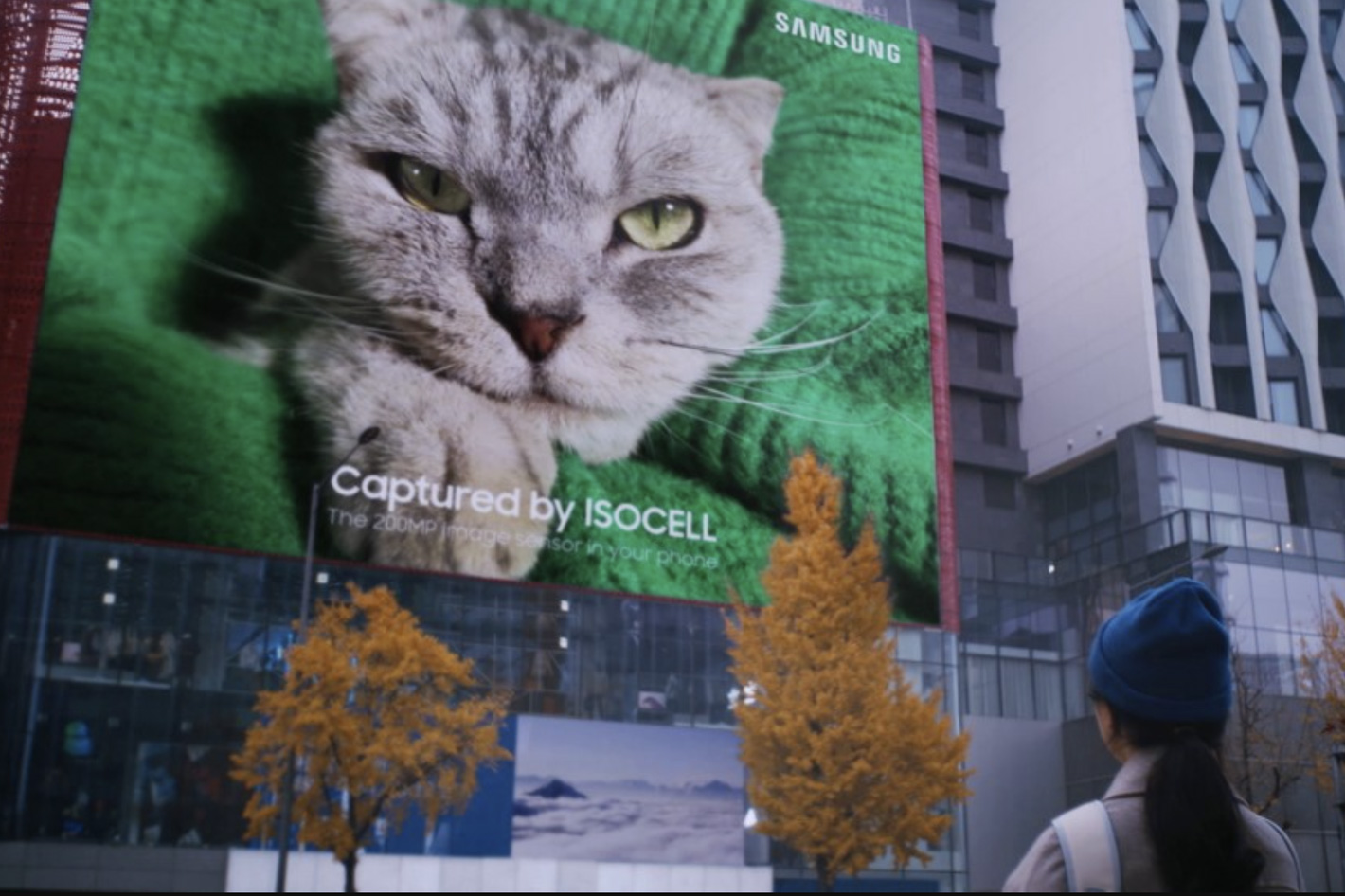 The ISOCELL HP1 can take 8K videos at 30 frames-per-second (fps) with minimum loss in the field of view. The HP1 merges four neighboring pixels to bring the resolution down to 50MP or 8,192 x 6,144 to take 8K (7,680 x 4,320) videos without the need to crop or scale down the full image resolution.
The ISOCELL HP1 can take 8K videos at 30 frames-per-second (fps) with minimum loss in the field of view. The HP1 merges four neighboring pixels to bring the resolution down to 50MP or 8,192 x 6,144 to take 8K (7,680 x 4,320) videos without the need to crop or scale down the full image resolution.
For ultimate low-light photography, the ISOCELL HP1 features an all-new ChameleonCell technology, a pixel-binning technology that uses a two-by-two, four-by-four or full pixel layout depending on the environment. In a low-lit environment, the HP1 transforms into a 12.5MP image sensor with large 2.56μm pixels by merging 16 neighboring pixels. The newly formed 2.56μm pixel is capable of more light absorption and sensitivity, producing brighter and clearer photos in in-doors or in the evening. In bright outdoor environments, the sensor’s 200-million pixels can capture ultra-high-definition photography on mobile devices.
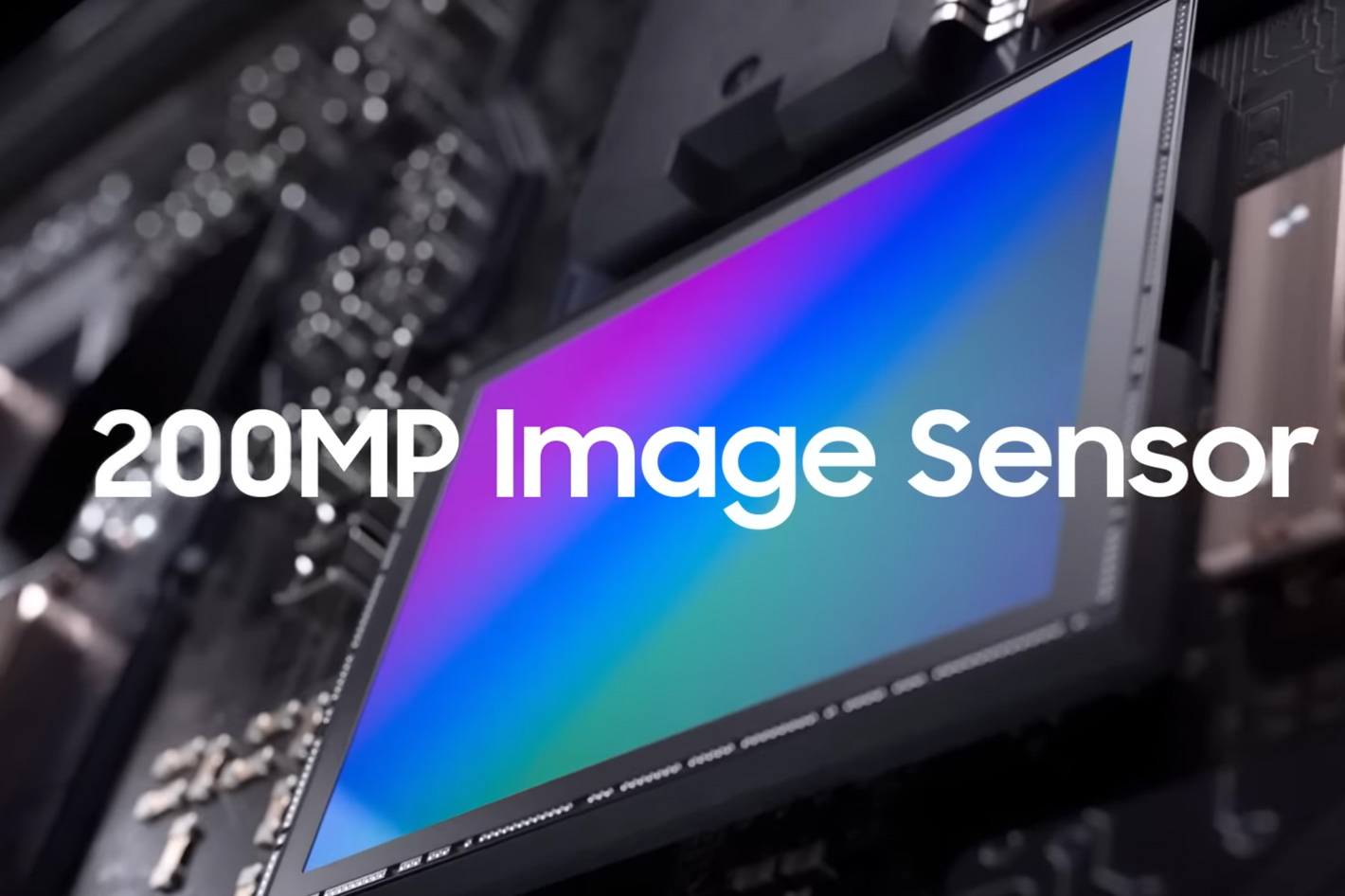 A lofty challenge
A lofty challenge
Samsung’s own Galaxy S22 Ultra uses the 108MP version of their ISOCELL imaging sensor, but it is expected that the next version, Galaxy S23 Ultra, will also go up to 200MP. While some will want to discuss the advantages of all those pixels in such small packages, I rather just follow the story now shared by Samsung, because it’s enjoyable reading for the coming weekend, and something you’ll probably will want to discuss with friends. Here is how the image sensor engineers at Samsung Electronics have accepted a lofty challenge — printing a picture that was taken with Samsung’s 200-megapixel (MP) mobile image sensor on an enormous 616 square meter-sized canvas.
“Our desire to truly test the limits of the high-performance 200MP image sensor and its image quality is what brought this challenge about,” said Changwan Kim, project manager from the Global Marcom Team of Device Solutions Division at Samsung Electronics.
“I have always wondered just how big you could go when it comes to printing out a 200MP image,” said Minhyuk Lee, an engineer from the Sensor Solutions Team at Samsung’s System LSI Business. “As exciting as it was, the challenge was a demanding one, as this was our first time showcasing the quality of an image sensor that has yet to be adopted in smartphones.”
Now, taking a picture with an image sensor that is still under development and does not come inside a smartphone, was a tricky decision. Besides, the camera module is not yet fully optimized, making things even more complex. Nonetheless, the team decided to push themselves by working with a living, moving subject rather than going with an inanimate object. That’s an interesting choice, considering that shutter lag has been a “feature” of Samsung’s camera modules, something that the company tries to correct with updates… as a recent one released for the Snapdragon version of the Galaxy S22 Ultra. But let’s leave that story aside, for now…
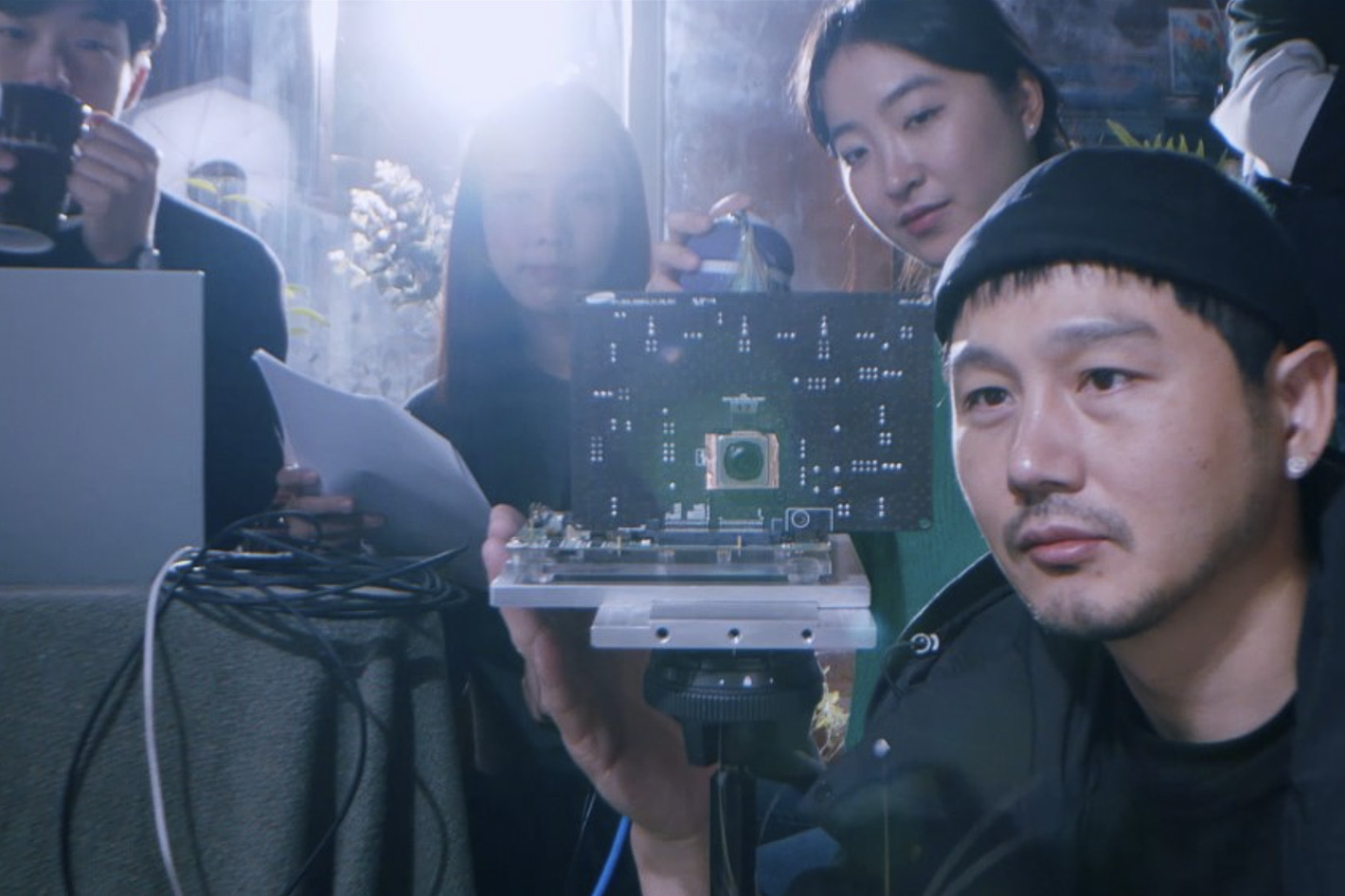 Shot with a smartphone camera module
Shot with a smartphone camera module
“Choosing a cat as our subject was a difficult decision. It gave us a lot of obstacles to overcome, such as capturing such an active subject with a test board,” said Minhyuk Lee. “However, the team concluded that the subject should be something that would show off a high level of detail and that was a popular photography subject at the same time.”
The team calculated several variables while preparing to shoot in an unstable environment. They even built a custom adaptor to allow them to attach various DSLR camera lenses to a test board. “In the end, we thought it was most important to capture the scene in the same conditions that smartphone users would be in,” said Kaeul Lee of the Sensor Solutions Team. “Because of this, we went with a smartphone camera module with no other aids. The results were very satisfying.”
Since the photo was taken using a test board, the photographer first checked the screen and adjusted the composition. Then, the engineers modified the settings to optimize exposure and focus. After observing the cat’s movements, the film crew then used different methods to take a series of pictures. Photographer Hyunjoong Kim was curious to see the result since 200MP resolution is not easy to come by, even in DSLR cameras. “I couldn’t believe my eyes when I saw the raw image enlarged to 100%,” said Hyunjoong Kim. “I was truly astonished by the degree of detail. In that moment, I knew any prejudices I previously had regarding smartphone photography had been proven wrong.”
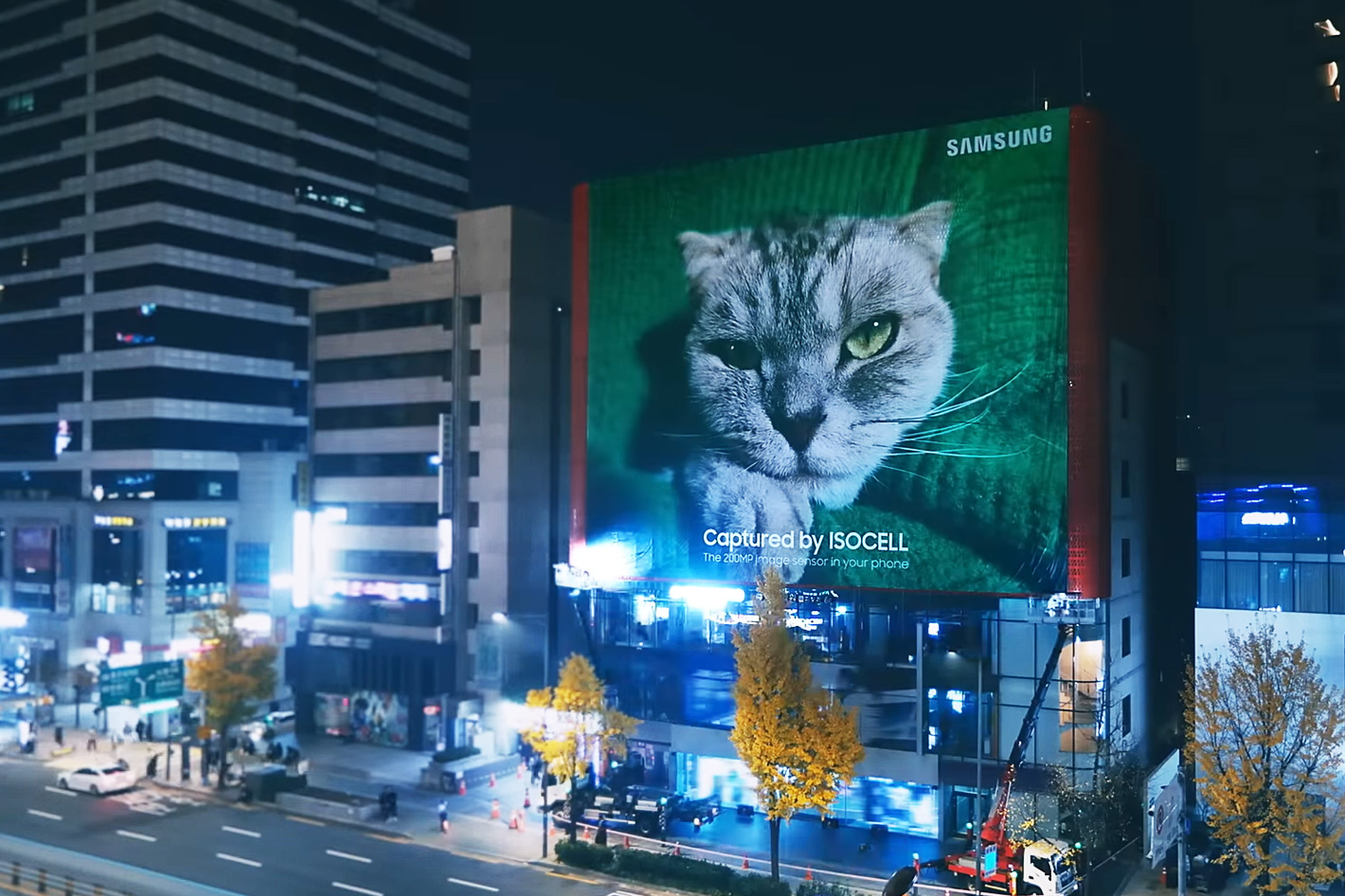 That’s a big cat!
That’s a big cat!
The printing process was far from easy, as obviously, a 616 square-meter image cannot be printed all at once. The picture had to be printed on twelve separate 2.3-meter-long pieces of fabric and then stitched together. The printout was then transported over on a truck and installed on the wall of a building using a crane. It’s a 28-meter-wide, 22-meter-high photograph, about one and a half times the size of a basketball court.
“When the picture was unfurled for the big reveal, the true enormousness of it really struck me, and not just because of its actual size,” said Changwan Kim. “The moment I witnessed the 200 million pixels depicting the stunning detail of the cat’s eyes and fur, I was overwhelmed by all of the efforts that had gone into developing this final product.”
For the team, the challenge of truly visualizing the next-level capabilities of 200MP technology was a thrilling one. Going forward, Samsung will continue to expand its leadership in the high-resolution market.
So, now that the story part of this cat image is told, it’s time for Samsung top sell its product. “The ultimate benefit of the 200MP image sensor is to allow users to capture an image that can be zoomed in and cropped without compromising on image quality,” said Kaeul Lee and Minhyuk Lee in a final comment. “The 200MP image sensor will soon become the optimal solution for 8K video recording.”

Filmtools
Filmmakers go-to destination for pre-production, production & post production equipment!
Shop Now